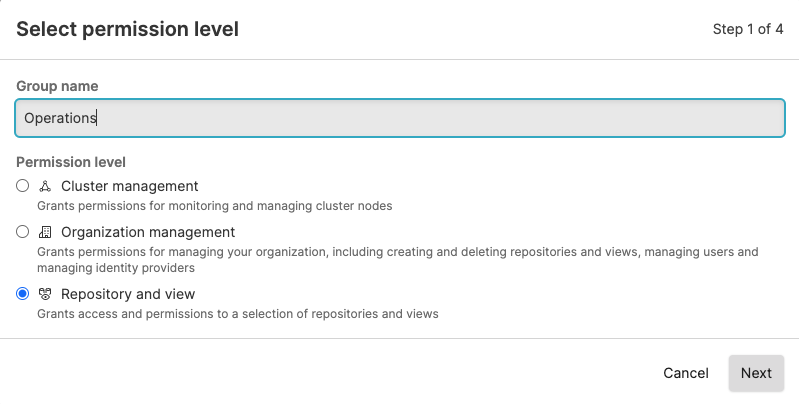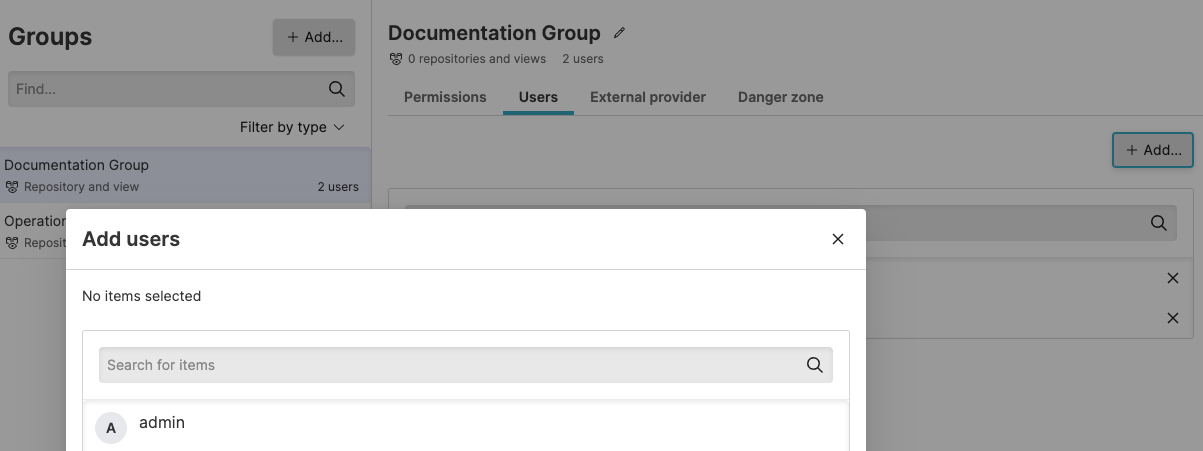Manage Groups
Security Requirements and Controls
Manage userspermission
LogScale's group management system enables organizations to efficiently control user permissions by creating and managing groups of users with specific access levels and roles across repositories and views. Organizations can create new groups, assign permissions, manage user memberships either directly or through external system synchronization, and modify group roles as needed, with the requirement that users must have the "Manage Users" permission or be root users to perform these administrative tasks.
Assigning permissions to individual users in larger organizations can be a cumbersome task. LogScale allows you to create groups and either manage user memberships directly in LogScale or by synchronizing with an external system.
Either way, you need to create groups in LogScale first.
Then you need your group to have users and permissions assigned to it. Any
user who is assigned the Change user access permission can assign permissions to groups for a
repository.
Note
You need to be an Organization owner on Cloud, or have the
Manage Users to create
groups and assign them users and permissions.
Note
If you intend to administer access to repositories and views centrally by
an organization owner or root only, be sure not to grant the
Change user access
permission to anyone. In practice, this means removing the permission from
all roles thus not allowing any users to go to a repository or view and
add another user or group directly.
Create New Groups
Security Requirements and Controls
Manage userspermission
Click on the profile menu icon and select Organization Settings then Users and permissions →
Groups.Click +Add... to create a new group.
Enter a group name, such as "Operations", and select the permission levels to apply to the new group. (See all types described at Permission levels.) Then click Next:

Figure 100. Create Groups
For the Repository and view level, choose whether the group should apply a role to a selection of repositories and views or to all current and future repositories and views. Select the preferred repositories or views and click Next.
Select a role for the new group, for example, Admin, then click Create group. You now have an empty group with no users assigned but the Admin role is given to all the selected repositories or views:

Figure 101. New Group Created
Afterwards, the added users are in the
Userslist.If you have a few repositories that need to be treated differently, click Exceptions to apply different permissions to selected repositories.
To get add a group through your own application, use the addGroup() mutation of the GraphQL API.
Note
Only users who have accepted the email invitation and completed the first log-in process can be added to a group.
Add Users to Groups
You can easily assign users to a group from the user interface. Below are the steps to do this:
Click on the profile menu icon and select Organization Settings. Under the Users and permissions heading in the left margin, click
Group.Next, select a group to which you want to add users. In the right panel for the group, click on the Users tab.
On the right will be a button labeled, + Add.... Click it and then a box will appear with a list of users, like the one in the screenshot below:

Figure 106. Assign Users to Groups
Select the user you want to add to the group. You may add more than one. Ones that are already added will remain in the group.
When you're finished, click Save. The users you selected will then be added and shown under the
Userstab for the group.
To add a user with your own program or from the command-line, see the addUsersToGroup() page in the GraphQL API documentation.